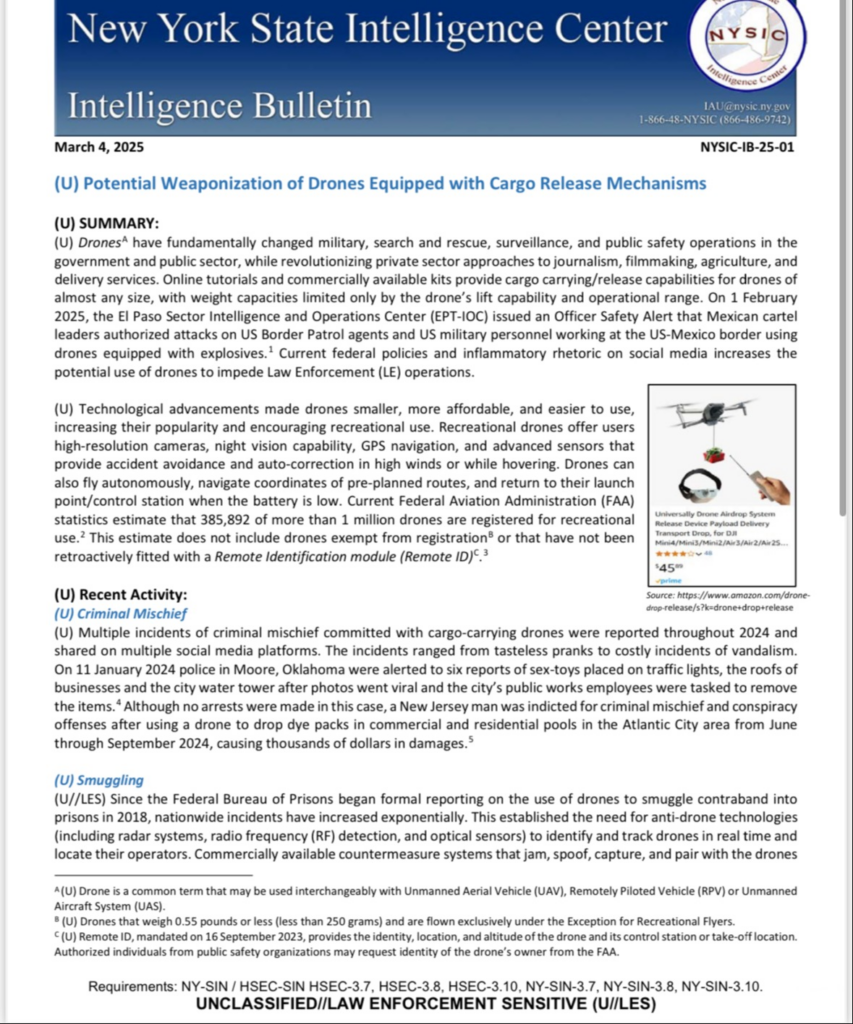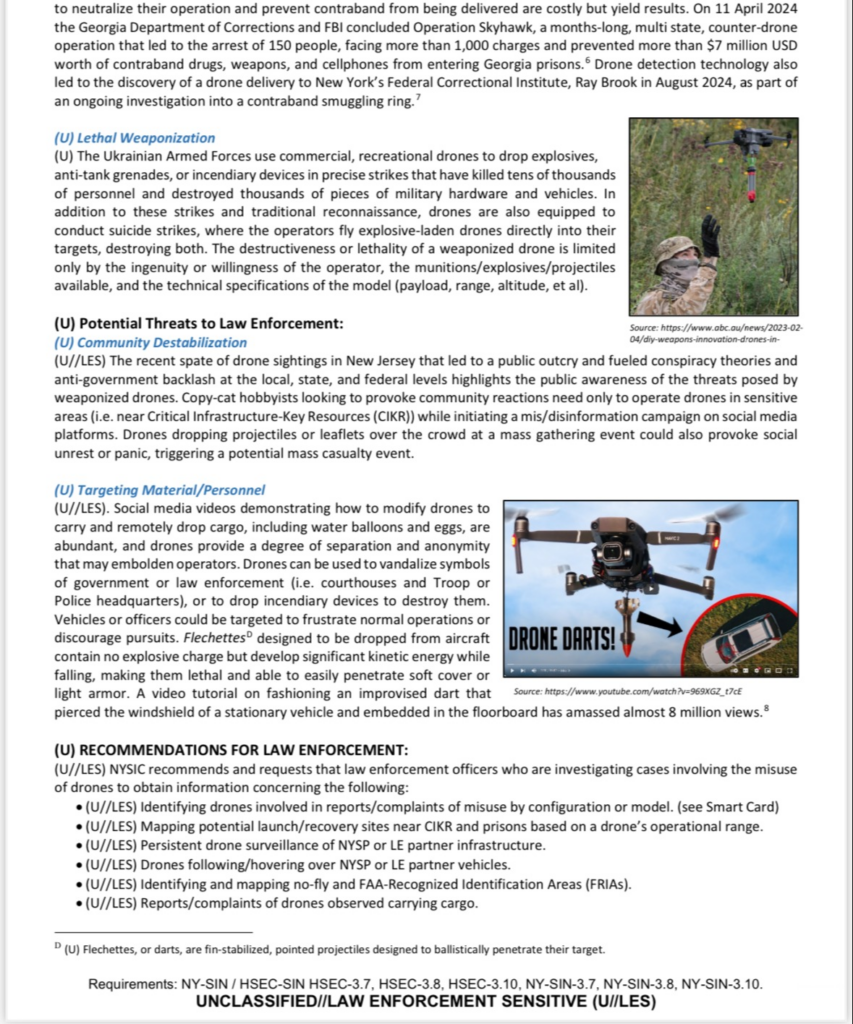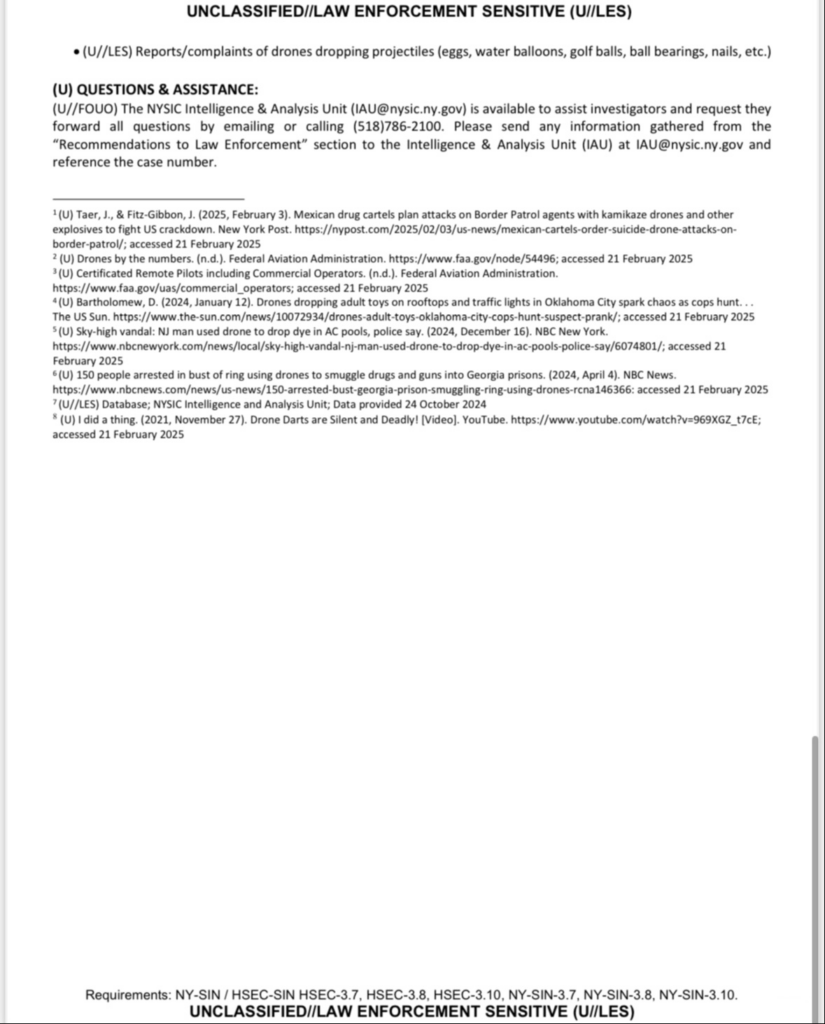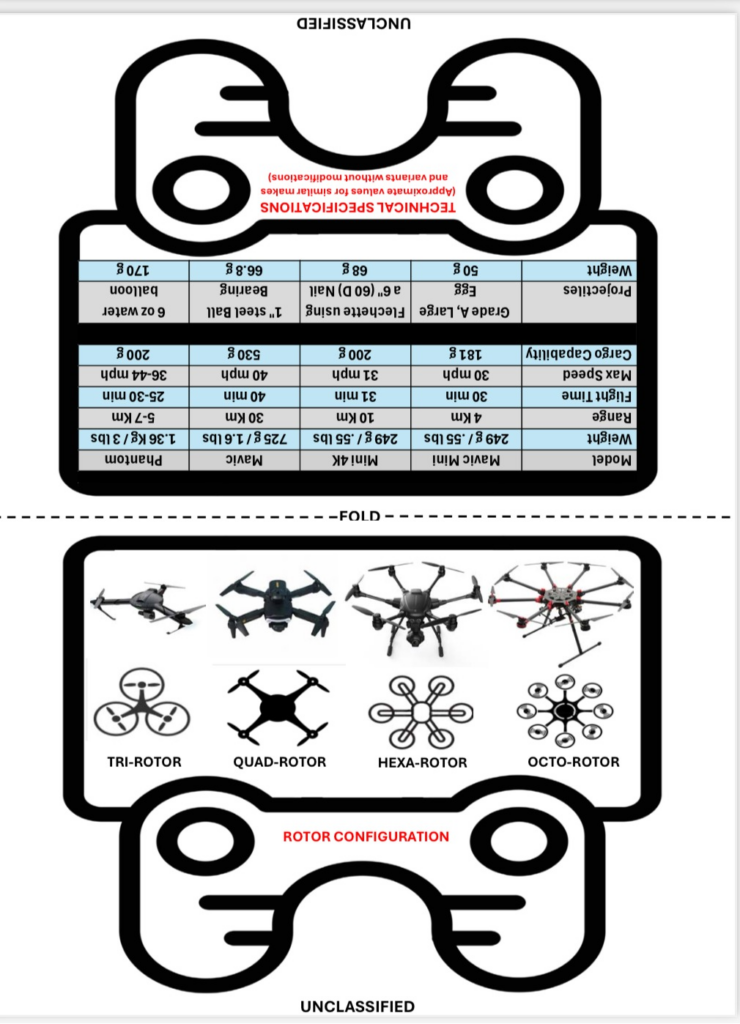7 March 2025, El Paso, Texas, Steven Zimmerman –
“Drones are used more often now,” says retired US Army Captain Brian Burke. “While in Afghanistan, we see drones attempting to overfly us at the airport. It is only a matter of time before someone arms a drone here, at home.”
There has been a lot of chatter lately about law enforcement using drones. Now, there is talk of bad actors using drones as weapons.
“It’s bad enough,” says Officer Williams with the Los Angeles Police Department, “that we have to deal with firearms, bottles, rocks, knives, and now we have to deal with drones.”
Officer Williams refers to a New York State Intelligence Center Intelligence Bulletin entitled “Potential Weaponization of Drones Equipped with Cargo Release Mechanisms.” [Bulletin located at the bottom of article]
“Drones are great for photography or amusement,” says Officer Williams, “but they have been used for crime already. This is a possible escalation of use.”
Are drones being used for criminal activity in the United States? Yes, there have been documented cases of bad actors using drones to bring drugs into the United States and prison facilities.
In 2017, the US Border Patrol voiced their worry about drug cartels utilizing drones to transport drugs into the United States after thirteen drones were suspected of carrying drugs during four days in November of 2017.
In September 2022, the US Border Patrol agents tracked a drone from an upscale neighborhood on the US side of the border to an Ontario winery and back.
When the drone returned to the US side of the border, law enforcement officers were able to seize it and arrest the operators. Hanging from the drone was about 6 1/2 pounds of ecstasy.
In August 2024, nearly two dozen people were charged as part of Operation Night Drop in Statesboro, Georgia.
In USA v. Hall et al. and USA v. Harris et al., bad actors were charged with conspiracy to possess with intent to distribute and to distribute marijuana and methamphetamine.
Operation Night Drop identified two networks of prison inmates and outside conspirators who used dorns, in addition to other methods, to deliver large quantities of drugs, cell phones, and other contraband to Smith State Prison in Glennville, Georgia.
Drones have become a key tool for bad actors to carry out criminal acts secretly and remotely. They are versatile and accessible, with GPS and cameras; some have night vision equipment.
As we’ve seen in the war between Russia and Ukraine, as well as with some actions by Hamas in Israel, drones can be equipped with systems to deploy explosive devices.
“We’ve seen the use of drones for surveillance and reconnaissance to gather intelligence on our movements and locations of our troops,” says Moshe Friedman, a soldier with the Israeli Defense Force (IDF). “This poses a danger not only to our troops but civilians on both sides of this fight.”
“We have seen these drones from Ukraine,” says Mikhail Abramzon Leviev, a relative of mine who serves in the Russian Army. “They carry the explosives, and I witness them carrying small weapons and some supplies to the Ukraine troops.”
Drones are versatile and can be utilized for almost anything. The weaponization of drones within the United States should come as no surprise.
“We have started a drone program,” says an Officer with the El Paso Police Department. We are going to use drones in large gatherings, to track suspects, and for other purposes. What we need is a way to target drones that we know are being used for crime.”
Then, there is the threat of weaponization from the drug cartels in Mexico.
“On February 1, 2025, the El Paso Sector Intelligence and Operations Center (EPT-IOC) received information advising that Mexican cartel leaders have authorized the deployment of drones equipped with explosives to be used against US Border Patrol agents and US military (personnel) currently working along the border with Mexico,” reads and an internal memo from Customs and Border Protection.
“We know these threats to our American counterparts exist,” says Manuel Guzman, Policía Federal Preventiva de Mexico. “We work diligently to prevent these attacks. Though I may not speak directly about specific events, I can confirm that we have prevented a number of attacks.”
“The U.S. Border Patrol’s mission includes detecting, deterring, disrupting, and apprehending dangerous individuals and narcotics from entering the U.S.,” says a CBP spokesman. “Threats and assaults against CBP personnel are taken very seriously. We remain vigilant and stand ready to ensure the safety of our personnel, aliens, and local communities and the security of our borders.”
This all begs the question, do officers in the United States now have to worry about drones being weaponized and used against them?
“Like the rooftops here in the city, the idea of drones is an itch in the back of our minds,” says Officer Rameriez of the New York City Police Department. “We got to watch everything now. But it won’t be long until we [meaning law enforcement] start putting tasers on drones.”
“It’s rather quite possible, this secern you present,” says James Williamson, a retired police officer from the United Kingdom. “When a scofflaw is set upon a nefarious misadventure, I am certain the utilization of drones as weapons will be a key factor in our near future.”
Before his retirement, Mr. Williamson indicated that protest groups had used drones as a countersurvalience.
“In England, there has been an uptick in immigration from other countries. This mass immigration has caused protest both for and against the droves of newcomers,” says Mr. Willimson. “During a pro-Palestinian march, it was observed that these individuals utilized drones to keep watch on us, as well as their opposition.”
What Captain Burke said bears repeating:
“Drones are used more often now,” says retired US Army Captain Brian Burke. “While in Afghanistan, we see drones attempting to overfly us at the airport. It is only a matter of time before someone arms a drone here, at home.”
[Note: Some names may have been changed]




